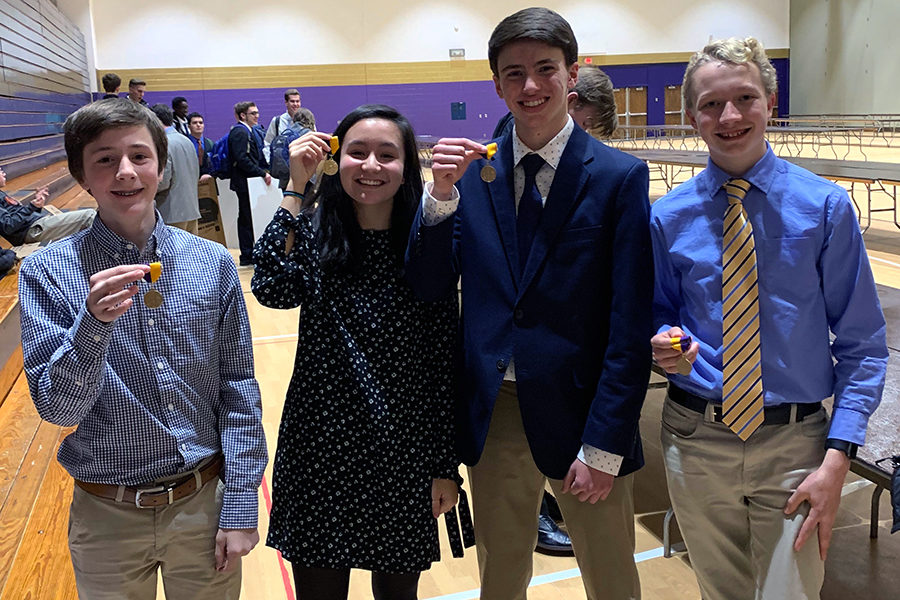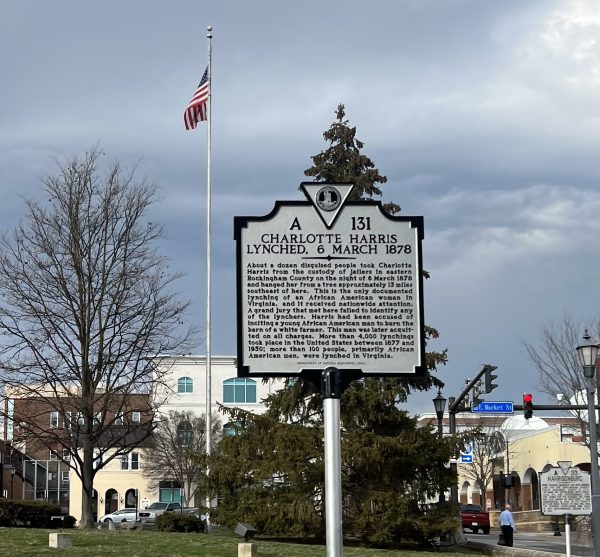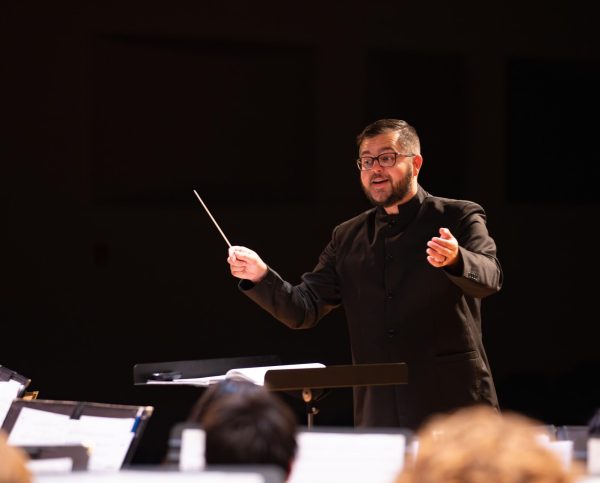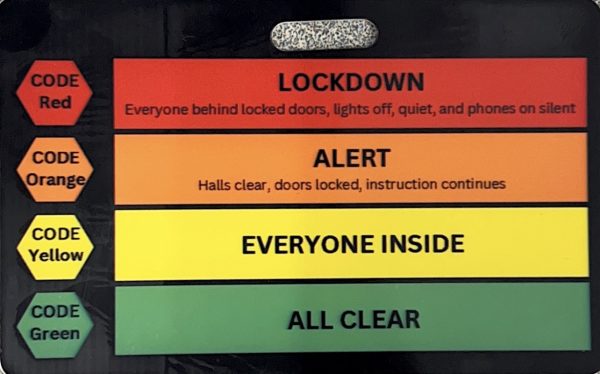Tongen, Henderson duo advances to state science fair with others
Sophomores Nathan Henderson and Holly Bill and freshmen Keenan Glago and Micah Tongen will advance to the state science fair.
Much like school lunches and crowded hallways, science fairs are a public school cliché most would find themselves familiar with. However, unlike the simple cardboard trifolds and baking soda volcanoes, the Regional Science Fair at JMU held much more complex projects and more influential outcomes then those seen on the Disney Channel sitcoms that familiarized them. For many HHS students, it also included prizes for their research and the chance to attend the State Science fair. Sophomore Nathan Henderson is among them.
“It was really exciting to win.” Henderson said, “It was really fun to go through the whole process.”
Henderson will be advancing in the biochemistry category for his research in avocado biodiesel and the free fatty content in the product created. Research like this has become more topical in recent years as scientists seek to find ways to move away from fossil fuels and find more sustainable energy sources. For Henderson, presenting research like this in a formal environment changed his view on future possibilities for himself in the scientific field.
“It was really eye opening on how to present in a scientific environment with people asking you hard questions and how to answer them.” Henderson said, “This really opened my eyes to the science field and how it works and the general state of it.”
Freshman Micah Tongen was another student presenting influential research at the science fair. His vertical gel electrophoresis box is among the first of its kind and a revolutionary design.
Gel electrophoresis is a laboratory method of separating DNA and RNA by segment size, based on the distance they travel through a porous gel when pulled by charge electricity. It is used to identify DNA similarities and differences between different samples, among other things. It has the real world applications of being used in crime scene investigations and comparative DNA testing, and almost all have been horizontal to prevent the dyed DNA from falling out.
“What our box did was it made it easier to view and cheaper.” Tongen said, “Our design was doubted by many people so we were assuming it wouldn’t work, but when it did work, it was kind of revolutionary. So, we said we should probably take it to a science fair.”
Tongen and his project partner won first place in engineering for their revolutionary design. Tongen is personally looking forward to being able to elaborate more on his design and the other doors this opens for their creation.
“We could get recognition for our box, and maybe a patent.” Tongen said.
All of the students who qualified will present their research again on Apr. 6t at the State Competition. Until then, it will be a matter of waiting and refining, hoping for the best.








